My
List |
Addition Date
|
Target
|
Mission
|
Instrument
|
Size
|

|
1996-01-02 |
Io
|
Galileo
|
|
3014x2422x3 |

|
-
PIA18176:
-
Galileo Over Io (Artist's Concept)
Full Resolution:
TIFF
(21.91 MB)
JPEG
(597.6 kB)
|

|
1996-01-29 |
Jupiter
|
Voyager
|
|
2000x536x3 |

|
-
PIA00011:
Cylindrical Projection of Jupiter
Full Resolution:
TIFF
(2.37 MB)
JPEG
(95.49 kB)
|

|
1996-01-29 |
Io
|
Voyager
|
|
1160x1160x3 |

|
-
PIA00012:
-
Galilean Satellites
Full Resolution:
TIFF
(2.14 MB)
JPEG
(74.25 kB)
|

|
1996-01-29 |
Jupiter
|
Voyager
|
VG Imaging Science Subsystem
|
940x886x3 |

|
-
PIA00015:
-
Large Brown Oval
Full Resolution:
TIFF
(1.991 MB)
JPEG
(54.79 kB)
|

|
1996-01-29 |
Jupiter
|
Voyager
|
|
760x876x3 |

|
-
PIA00017:
-
Cloud Layers Southeast of the Great Red Spot
Full Resolution:
TIFF
(1.838 MB)
JPEG
(53.42 kB)
|

|
1996-01-29 |
Jupiter
|
Voyager
|
Imaging Science Subsystem
|
896x928x3 |

|
-
PIA00018:
-
Exaggerated Color View of the Great Red Spot
Full Resolution:
TIFF
(1.933 MB)
JPEG
(135.2 kB)
|

|
1996-01-29 |
Jupiter
|
Voyager
|
|
908x880x3 |

|
-
PIA00019:
-
Cloud Layers East of the Great Red Spot
Full Resolution:
TIFF
(1.709 MB)
JPEG
(63.41 kB)
|

|
1996-01-29 |
Jupiter
|
Voyager
|
|
908x880x3 |
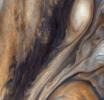
|
-
PIA00020:
-
Exaggerated Color East of the Great Red Spot
Full Resolution:
TIFF
(1.728 MB)
JPEG
(125 kB)
|

|
1996-01-29 |
Io
|
Voyager
|
VG ISS - Narrow Angle
|
1000x1000x3 |
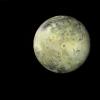
|
-
PIA00023:
-
Io - Full Disk
Full Resolution:
TIFF
(1.21 MB)
JPEG
(40.95 kB)
|

|
1996-01-29 |
Ganymede
|
Voyager
|
VG ISS - Narrow Angle
|
2000x2000x3 |

|
-
PIA00081:
-
Ganymede Mosaic
Full Resolution:
TIFF
(9.883 MB)
JPEG
(445.4 kB)
|

|
1996-01-29 |
Jupiter
|
Galileo
|
Solid-State Imaging
|
1600x1250x1 |

|
-
PIA00139:
-
Comet Shoemaker-Levy 9 Fragment W Impact With Jupiter
Full Resolution:
TIFF
(93.2 kB)
JPEG
(37.14 kB)
|

|
1996-01-29 |
Jupiter
|
Voyager
|
VG ISS - Narrow Angle
|
820x540x3 |
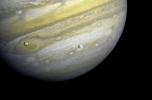
|
-
PIA00144:
-
Jupiter with Satellites Io and Europa
Full Resolution:
TIFF
(821.7 kB)
JPEG
(31.32 kB)
|

|
1996-02-01 |
Jupiter
|
Voyager
|
VG ISS - Narrow Angle
|
895x848x3 |

|
-
PIA00014:
-
Jupiter Great Red Spot
Full Resolution:
TIFF
(1.502 MB)
JPEG
(56.12 kB)
|

|
1996-03-13 |
Jupiter
|
Voyager
|
VG ISS - Narrow Angle
|
1000x1000x3 |

|
-
PIA00235:
-
Jupiter with Satellite Io
Full Resolution:
TIFF
(1.226 MB)
JPEG
(37.26 kB)
|

|
1996-06-03 |
Io
|
Voyager
|
|
684x803x3 |

|
-
PIA00010:
-
Io with Loki Plume on Bright Limb
Full Resolution:
TIFF
(1.65 MB)
JPEG
(50.29 kB)
|

|
1996-06-06 |
Ganymede
|
Galileo
|
Solid-State Imaging
|
825x825x1 |

|
-
PIA00273:
-
Optical Navigation Image of Ganymede
Full Resolution:
TIFF
(6.779 kB)
JPEG
(9.291 kB)
|

|
1996-07-17 |
Ganymede
|
Voyager
|
VG ISS - Narrow Angle
|
300x300x1 |

|
-
PIA00351:
-
Ganymede at 2.6 million miles
Full Resolution:
TIFF
(33.81 kB)
JPEG
(4.17 kB)
|

|
1996-07-17 |
Ganymede
|
Voyager
|
VG ISS - Narrow Angle
|
300x300x3 |

|
-
PIA00352:
-
Ganymede at 3.4 million miles
Full Resolution:
TIFF
(133.4 kB)
JPEG
(5.592 kB)
|

|
1996-07-17 |
Ganymede
|
Voyager
|
VG ISS - Narrow Angle
|
460x780x1 |

|
-
PIA00354:
-
Ganymede at 87,000 miles
Full Resolution:
TIFF
(218.7 kB)
JPEG
(115.5 kB)
|

|
1996-08-01 |
Jupiter
|
Voyager
|
|
2798x2030x3 |

|
-
PIA00022:
-
Jupiter Great Red Spot Mosaic
Full Resolution:
TIFF
(10.08 MB)
JPEG
(324 kB)
|

|
1996-08-09 |
Europa
|
Voyager
|
Near Infrared Camera
|
1500x2000x3 |

|
-
PIA00366:
-
Europa - Mosaic
Full Resolution:
TIFF
(3.213 MB)
JPEG
(223.4 kB)
|

|
1996-08-09 |
Europa
|
Voyager
|
|
400x400x3 |

|
-
PIA00016:
-
Europa - Full Disk
Full Resolution:
TIFF
(160.8 kB)
JPEG
(6.943 kB)
|

|
1996-08-12 |
Callisto
|
Voyager
|
VG ISS - Narrow Angle
|
2000x2000x3 |

|
-
PIA00080:
-
Callisto Mosaic
Full Resolution:
TIFF
(5.114 MB)
JPEG
(252.5 kB)
|

|
1996-09-26 |
Jupiter
|
Voyager
|
|
1471x1238x3 |

|
-
PIA00065:
-
Jupiter's Great Red Spot Region
Full Resolution:
TIFF
(3.892 MB)
JPEG
(115.8 kB)
|

|
1996-09-26 |
Jupiter
|
Voyager
|
VG ISS - Narrow Angle
|
600x600x3 |

|
-
PIA00454:
-
Early Voyager 1 Images of Jupiter
Full Resolution:
TIFF
(491.5 kB)
JPEG
(21.78 kB)
|

|
1996-09-26 |
Jupiter
|
Voyager
|
Imaging Science Subsystem
|
400x400x3 |

|
-
PIA00029:
-
First Close-up Image of Jupiter from Voyager 1
Full Resolution:
TIFF
(280.8 kB)
JPEG
(10.37 kB)
|

|
1996-09-26 |
Jupiter
|
Voyager
|
VG ISS - Narrow Angle
|
500x500x3 |

|
-
PIA00455:
-
Jupiter with Io Crossing
Full Resolution:
TIFF
(412 kB)
JPEG
(15.15 kB)
|

|
1996-09-26 |
Jupiter
|
Voyager
|
VG ISS - Narrow Angle
|
846x800x3 |

|
-
PIA00456:
-
Jupiter's Great Red Spot and South Equatorial Belt
Full Resolution:
TIFF
(1.41 MB)
JPEG
(48.12 kB)
|

|
1996-09-26 |
Callisto
|
Voyager
|
VG ISS - Narrow Angle
|
800x800x3 |
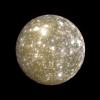
|
-
PIA00457:
-
Callisto False Color
Full Resolution:
TIFF
(789 kB)
JPEG
(49.94 kB)
|

|
1996-09-26 |
Jupiter
|
Voyager
|
VG ISS - Narrow Angle
|
607x496x3 |

|
-
PIA00458:
-
Jupiter's North Equatorial Belt
Full Resolution:
TIFF
(748.4 kB)
JPEG
(21.62 kB)
|

|
1996-09-26 |
Europa
|
Voyager
|
VG ISS - Narrow Angle
|
704x680x3 |

|
-
PIA00459:
-
Europa During Voyager 2 Closest Approach
Full Resolution:
TIFF
(895.6 kB)
JPEG
(49.13 kB)
|

|
1996-11-13 |
Jupiter
|
Voyager
|
VG ISS - Narrow Angle
|
850x575x3 |

|
-
PIA00371:
-
Jupiter - Io In Front of Jupiter's Turbulent Clouds
Full Resolution:
TIFF
(797.6 kB)
JPEG
(28.95 kB)
|

|
1996-11-13 |
Jupiter
|
Voyager
|
VG ISS - Narrow Angle
|
790x900x3 |

|
-
PIA00372:
-
Jupiter - Region from the Great Red Spot to the South Pole
Full Resolution:
TIFF
(1.269 MB)
JPEG
(60.4 kB)
|

|
1996-11-16 |
Io
|
Voyager
|
VG ISS - Narrow Angle
|
800x795x1 |

|
-
PIA00375:
-
Io - Volcano Loki and Loki Patera
Full Resolution:
TIFF
(517.3 kB)
JPEG
(51.9 kB)
|

|
1996-11-16 |
Io
|
Voyager
|
VG ISS - Narrow Angle
|
325x400x1 |

|
-
PIA00373:
-
Io - Volcanic Eruption
Full Resolution:
TIFF
(66.68 kB)
JPEG
(11.83 kB)
|

|
1996-11-16 |
Io
|
Voyager
|
VG ISS - Narrow Angle
|
220x300x1 |

|
-
PIA00374:
-
Io - One of at Least Four Simultaneous Erupting Volcanic Eruptions
Full Resolution:
TIFF
(25.26 kB)
JPEG
(4.047 kB)
|

|
1997-01-09 |
Io
|
Voyager
|
VG ISS - Narrow Angle
|
680x500x1 |

|
-
PIA00378:
-
Io At 5 Million Miles
Full Resolution:
TIFF
(304.1 kB)
JPEG
(34.45 kB)
|

|
1997-01-09 |
Ganymede
|
Voyager
|
VG ISS - Narrow Angle
|
700x500x1 |

|
-
PIA00380:
-
Ganymede At 150,000 Miles
Full Resolution:
TIFF
(293.4 kB)
JPEG
(87.75 kB)
|

|
1997-01-09 |
Io
|
Voyager
|
VG ISS - Narrow Angle
|
140x140x1 |

|
-
PIA00379:
-
Volcanic Eruptions on Io
Full Resolution:
TIFF
(7.186 kB)
JPEG
(2.809 kB)
|

|
1997-01-09 |
Callisto
|
Voyager
|
VG ISS - Narrow Angle
|
740x750x1 |

|
-
PIA00484:
-
Concentric Rings Surrounding Valhalla
Full Resolution:
TIFF
(688.5 kB)
JPEG
(191.9 kB)
|

|
1997-01-09 |
J Rings
|
Voyager
|
VG ISS - Narrow Angle
|
439x545x1 |

|
-
PIA00376:
-
Rings of Jupiter Star Trail
Full Resolution:
TIFF
(104.2 kB)
JPEG
(17.76 kB)
|

|
1997-01-09 |
J Rings
|
Voyager
|
VG ISS - Narrow Angle
|
439x545x1 |

|
-
PIA00377:
-
Rings of Jupiter
Full Resolution:
TIFF
(21.08 kB)
JPEG
(6.934 kB)
|

|
1997-01-09 |
Jupiter
|
Voyager
|
VG ISS - Wide Angle
|
800x800x1 |

|
-
PIA00204:
-
Lights In The Night
Full Resolution:
TIFF
(153.9 kB)
JPEG
(164.8 kB)
|

|
1997-09-07 |
Ganymede
|
Galileo
|
Solid-State Imaging
|
526x797x1 |

|
-
PIA00276:
-
Ganymede - Ridges, Grooves, Craters and Smooth Areas of Uruk Sulcus Region
Full Resolution:
TIFF
(530 kB)
JPEG
(153.1 kB)
|

|
1997-09-07 |
Ganymede
|
Galileo
|
Solid-State Imaging
|
1105x798x1 |

|
-
PIA00277:
-
Ganymede - Comparison of Voyager and Galileo Resolution
Full Resolution:
TIFF
(718.2 kB)
JPEG
(148.5 kB)
|

|
1997-09-07 |
Ganymede
|
Galileo
|
Solid-State Imaging
|
1443x1656x1 |

|
-
PIA00281:
-
Ganymede - Galileo Mosaic Overlayed on Voyager Data in Uruk Sulcus Region
Full Resolution:
TIFF
(2.27 MB)
JPEG
(406.5 kB)
|

|
1997-09-07 |
Ganymede
|
Galileo
|
Solid-State Imaging
|
1097x885x1 |

|
-
PIA00705:
-
Detail of Ganymede's Uruk Sulcus Region as Viewed by Galileo and Voyager
Full Resolution:
TIFF
(1.014 MB)
JPEG
(236.1 kB)
|

|
1997-09-07 |
Ganymede
|
Galileo
|
Solid-State Imaging
|
544x796x1 |

|
-
PIA00280:
-
Ganymede - Mixture of Terrains and Large Impact Crater in Uruk Sulcus Region
Full Resolution:
TIFF
(479.4 kB)
JPEG
(135.4 kB)
|

|
1997-09-07 |
Ganymede
|
Galileo
|
Solid-State Imaging
|
640x480x1 |

|
-
PIA00278:
-
Ganymede - Dark Terrain in Galileo Regio
Full Resolution:
TIFF
(286.6 kB)
JPEG
(60.72 kB)
|

|
1997-09-07 |
Ganymede
|
Galileo
|
Solid-State Imaging
|
574x798x1 |

|
-
PIA00279:
-
Ganymede - Ancient Impact Craters in Galileo Regio
Full Resolution:
TIFF
(526.2 kB)
JPEG
(169.6 kB)
|

|
1997-09-07 |
Ganymede
|
Galileo
|
Solid-State Imaging
|
1665x1882x1 |

|
-
PIA00493:
-
Uruk Sulcus Mosaic - Galileo over Voyager Data
Full Resolution:
TIFF
(2.82 MB)
JPEG
(463.6 kB)
|

|
1997-09-07 |
Europa
|
Galileo
|
Solid-State Imaging
|
1070x868x1 |

|
-
PIA00294:
-
Europa's Active Surface
Full Resolution:
TIFF
(732.4 kB)
JPEG
(161.1 kB)
|

|
1997-09-07 |
Europa
|
Galileo
|
Solid-State Imaging
|
968x452x1 |

|
-
PIA00291:
-
Europa's Broken Ice
Full Resolution:
TIFF
(367.8 kB)
JPEG
(81.92 kB)
|

|
1997-09-07 |
Io
|
Galileo
|
Solid-State Imaging
|
2400x1900x3 |

|
-
PIA00715:
-
Full Disk Views of Io (Natural and Enhanced Color)
Full Resolution:
TIFF
(7.555 MB)
JPEG
(204.3 kB)
|

|
1997-09-07 |
Io
|
Galileo
|
Solid-State Imaging
|
1840x1900x3 |

|
-
PIA00712:
-
Resurfacing of the Jupiter-facing hemisphere of Io
Full Resolution:
TIFF
(4.461 MB)
JPEG
(189.4 kB)
|

|
1997-09-07 |
Io
|
Galileo
|
Solid-State Imaging
|
2010x1640x3 |

|
-
PIA00709:
-
Massive Resurfacing of the Ionian Volcano Ra Patera
Full Resolution:
TIFF
(5.755 MB)
JPEG
(211.6 kB)
|

|
1997-09-07 |
Io
|
Galileo
|
Solid-State Imaging
|
1890x1780x3 |

|
-
PIA00710:
-
Changes near the Volcano Loki Patera on Io
Full Resolution:
TIFF
(5.808 MB)
JPEG
(185.5 kB)
|

|
1997-09-07 |
Io
|
Galileo
|
Solid-State Imaging
|
1640x1650x3 |

|
-
PIA00711:
-
Unusual Volcanic Pyroclastic Deposits on Io
Full Resolution:
TIFF
(4.224 MB)
JPEG
(179.7 kB)
|

|
1997-09-07 |
Io
|
Galileo
|
Solid-State Imaging
|
1620x1330x3 |

|
-
PIA00713:
-
Surface Changes on Io
Full Resolution:
TIFF
(3.614 MB)
JPEG
(133.9 kB)
|

|
1997-09-07 |
Io
|
Galileo
|
Solid-State Imaging
|
230x300x3 |

|
-
PIA00714:
-
Three Surface Changes on Io
Full Resolution:
TIFF
(144.5 kB)
JPEG
(8.796 kB)
|

|
1997-09-07 |
Jupiter
|
Galileo
|
Solid-State Imaging
|
1400x900x1 |

|
-
PIA00488:
-
Great Red Spot Mosaic - Near-infrared Filter
Full Resolution:
TIFF
(506.6 kB)
JPEG
(76.3 kB)
|

|
1997-09-07 |
Jupiter
|
Galileo
|
Solid-State Imaging
|
1024x2048x3 |

|
-
PIA00296:
-
Jupiter's Great Red Spot
Full Resolution:
TIFF
(1.712 MB)
JPEG
(59.1 kB)
|

|
1997-09-07 |
Jupiter
|
Galileo
|
Solid-State Imaging
|
2000x1431x3 |

|
-
PIA00708:
-
True Color of Jupiter's Great Red Spot
Full Resolution:
TIFF
(3.943 MB)
JPEG
(108.4 kB)
|

|
1997-09-07 |
Jupiter
|
Galileo
|
Solid-State Imaging
|
2100x1200x3 |

|
-
PIA00489:
-
False Color Mosaic Great Red Spot
Full Resolution:
TIFF
(4.767 MB)
JPEG
(167.5 kB)
|

|
1997-09-07 |
Ganymede
|
Galileo
|
Solid-State Imaging
|
800x800x1 |
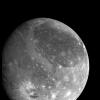
|
-
PIA00706:
-
Ganymede Global
Full Resolution:
TIFF
(371.9 kB)
JPEG
(52.96 kB)
|

|
1997-09-07 |
Ganymede
|
Galileo
|
Solid-State Imaging
|
580x360x1 |
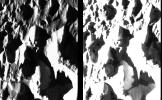
|
-
PIA00707:
-
Fine Details of the Icy Surface of Ganymede
Full Resolution:
TIFF
(108 kB)
JPEG
(47.1 kB)
|

|
1997-09-07 |
Ganymede
|
Galileo
|
Solid-State Imaging
|
2470x2110x1 |

|
-
PIA00492:
-
Galileo Regio Mosaic - Galileo over Voyager Data
Full Resolution:
TIFF
(4.43 MB)
JPEG
(703.3 kB)
|

|
1997-09-07 |
Io
|
Galileo
|
Solid-State Imaging
|
2000x2000x3 |

|
-
PIA00491:
-
Five Color Views of Io
Full Resolution:
TIFF
(4.97 MB)
JPEG
(155.9 kB)
|

|
1997-09-07 |
Europa
|
Galileo
|
Solid-State Imaging
|
793x794x3 |

|
-
PIA00275:
-
Europa In Color
Full Resolution:
TIFF
(2.331 MB)
JPEG
(142.2 kB)
|

|
1997-09-07 |
Io
|
Galileo
|
Solid-State Imaging
|
2340x1475x3 |

|
-
PIA00274:
-
Io Glowing in the Dark
Full Resolution:
TIFF
(1.414 MB)
JPEG
(208.6 kB)
|

|
1997-09-07 |
Jupiter
|
Galileo
|
Solid-State Imaging
|
1546x1127x1 |

|
-
PIA00490:
-
Features of Jupiter's Great Red Spot
Full Resolution:
TIFF
(716.7 kB)
JPEG
(157.4 kB)
|

|
1997-09-07 |
Io
|
Galileo
|
Solid-State Imaging
|
820x710x3 |

|
-
PIA00718:
-
Io's Pele Hemisphere
Full Resolution:
TIFF
(1.461 MB)
JPEG
(45.62 kB)
|

|
1997-09-07 |
Io
|
Galileo
|
Solid-State Imaging
|
715x287x3 |

|
-
PIA00717:
-
Pele Comparisons Since 1979
Full Resolution:
TIFF
(624.4 kB)
JPEG
(21.91 kB)
|

|
1997-09-07 |
Jupiter
|
Galileo
|
Solid-State Imaging
|
1400x800x1 |

|
-
PIA00719:
-
New Territory West of the Great Red Spot
Full Resolution:
TIFF
(499.6 kB)
JPEG
(62.59 kB)
|

|
1997-09-07 |
Jupiter
|
Galileo
|
Solid-State Imaging
|
2800x1600x1 |

|
-
PIA00721:
-
The Great Red Spot at Four Different Wavelengths
Full Resolution:
TIFF
(2.567 MB)
JPEG
(311.5 kB)
|

|
1997-09-07 |
Jupiter
|
Galileo
|
Solid-State Imaging
|
1000x1400x1 |

|
-
PIA00720:
-
Time Series of the Great Red Spot (near-infrared filter)
Full Resolution:
TIFF
(963.9 kB)
JPEG
(121.6 kB)
|

|
1997-09-07 |
Ganymede
|
Galileo
|
Solid-State Imaging
|
1200x800x1 |

|
-
PIA00579:
-
Ganymede Uruk Sulcus High Resolution Mosaic Shown in Context
Full Resolution:
TIFF
(628.1 kB)
JPEG
(130.6 kB)
|

|
1997-09-07 |
Ganymede
|
Galileo
|
Solid-State Imaging
|
1200x800x1 |
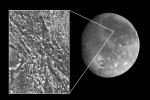
|
-
PIA00580:
-
Ganymede Galileo Regio High Resolution Mosaic Shown in Context
Full Resolution:
TIFF
(593.1 kB)
JPEG
(136 kB)
|

|
1997-09-07 |
Europa
|
Galileo
|
Solid-State Imaging
|
630x325x1 |

|
-
PIA00578:
-
Europa Ice Floes
Full Resolution:
TIFF
(226.2 kB)
JPEG
(43.25 kB)
|

|
1997-09-07 |
Ganymede
|
Galileo
|
Solid-State Imaging
|
523x764x1 |

|
-
PIA00722:
-
Galileo Resolutions: Ganymede and the San Francisco Bay Area
Full Resolution:
TIFF
(379.3 kB)
JPEG
(72.72 kB)
|

|
1997-09-07 |
Europa
|
Galileo
|
Solid-State Imaging
|
1024x1024x3 |

|
-
PIA00723:
-
Context of Europa images from Galileo
Full Resolution:
TIFF
(1.121 MB)
JPEG
(105.3 kB)
|

|
1997-09-07 |
Jupiter
|
Galileo
|
Solid-State Imaging
|
550x750x1 |

|
-
PIA00725:
-
Time changes in Storm Clouds in Jupiter's Atmosphere
Full Resolution:
TIFF
(132.8 kB)
JPEG
(26.9 kB)
|

|
1997-09-07 |
Jupiter
|
Galileo
|
Solid-State Imaging
|
513x701x1 |

|
-
PIA00724:
-
Mesoscale Waves in Jupiter's Atmosphere
Full Resolution:
TIFF
(109.9 kB)
JPEG
(28.37 kB)
|

|
1997-09-08 |
Io
|
Galileo
|
Solid-State Imaging
|
700x800x3 |

|
-
PIA00282:
-
Io - Full Disk Centered on Media Regio
Full Resolution:
TIFF
(275.2 kB)
JPEG
(15.88 kB)
|

|
1997-09-08 |
Io
|
Galileo
|
Solid-State Imaging
|
2600x1150x3 |

|
-
PIA00292:
-
Three Views of Io
Full Resolution:
TIFF
(3.931 MB)
JPEG
(118.1 kB)
|

|
1997-09-08 |
Jupiter
|
Galileo
|
Solid-State Imaging
|
700x800x3 |

|
-
PIA00506:
-
Thunderheads on Jupiter
Full Resolution:
TIFF
(1.007 MB)
JPEG
(63.96 kB)
|

|
1997-09-10 |
Io
|
Galileo
|
Solid-State Imaging
|
1775x1300x3 |

|
-
PIA00293:
-
Eruption on Io
Full Resolution:
TIFF
(1.322 MB)
JPEG
(59.83 kB)
|

|
1997-09-23 |
Jupiter
|
Galileo
|
Photopolarimeter Subsystem
|
807x700x3 |

|
-
PIA00730:
-
Jupiter's Temperatures--Broad Latitude
Full Resolution:
TIFF
(1.011 MB)
JPEG
(42.99 kB)
|

|
1997-09-23 |
Jupiter
|
Galileo
|
Solid-State Imaging
|
712x715x3 |

|
-
PIA00603:
-
False Color Aurora
Full Resolution:
TIFF
(1.705 MB)
JPEG
(98.67 kB)
|

|
1997-09-23 |
Jupiter
|
Galileo
|
Solid-State Imaging
|
614x900x1 |

|
-
PIA00605:
-
Visible Jovian Aurora
Full Resolution:
TIFF
(254.8 kB)
JPEG
(106.1 kB)
|

|
1997-09-24 |
Jupiter
|
Galileo
|
Photopolarimeter Subsystem
|
585x376x3 |
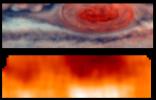
|
-
PIA00731:
-
Jovian Temperatures--Highest Resolution
Full Resolution:
TIFF
(447.1 kB)
JPEG
(17.9 kB)
|

|
1997-09-29 |
Jupiter
|
Galileo
|
Photopolarimeter Subsystem
|
875x605x3 |
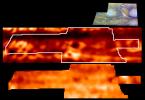
|
-
PIA00732:
-
Jupiter's Temperatures
Full Resolution:
TIFF
(771.1 kB)
JPEG
(49.91 kB)
|

|
1997-11-04 |
Io
|
Galileo
|
Solid-State Imaging
|
200x200x1 |

|
-
PIA01073:
-
Io Plume Monitoring (frames 1-36)

Full Resolution:
|

|
1997-11-04 |
Jupiter
|
Galileo
|
Solid-State Imaging
|
313x256x1 |
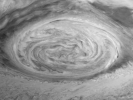
|
-
PIA01083:
-
Dynamics of Jupiter's Great Red Spot in the Near-infrared

Full Resolution:
|

|
1997-11-17 |
Callisto
|
Galileo
|
Solid-State Imaging
|
1425x1625x1 |

|
-
PIA01077:
-
Large impact on Callisto's Southern Hemisphere
Full Resolution:
TIFF
(1.081 MB)
JPEG
(336.9 kB)
|

|
1997-11-17 |
Callisto
|
Galileo
|
Near Infrared Mapping Spectrometer
|
900x850x3 |

|
-
PIA01078:
-
Callisto's Southern Hemisphere
Full Resolution:
TIFF
(807.7 kB)
JPEG
(96.79 kB)
|

|
1997-11-17 |
Callisto
|
Galileo
|
Near Infrared Mapping Spectrometer
|
1800x1700x3 |

|
-
PIA01079:
-
Callisto's Southern Hemisphere as Viewed by NIMS & SSI
Full Resolution:
TIFF
(5.516 MB)
JPEG
(418.8 kB)
|

|
1997-11-17 |
Io
|
Galileo
|
Solid-State Imaging
|
1401x1938x3 |

|
-
PIA01081:
-
Color Mosaic and Active Volcanic Plumes on Io
Full Resolution:
TIFF
(4.933 MB)
JPEG
(226.2 kB)
|

|
1997-11-18 |
Io
|
Galileo
|
Solid-State Imaging
|
798x787x3 |

|
-
PIA00494:
-
Io in front of Jupiter
Full Resolution:
TIFF
(2.13 MB)
JPEG
(88.84 kB)
|

|
1997-11-18 |
Io
|
Galileo
|
Solid-State Imaging
|
1215x729x3 |

|
-
PIA00495:
-
Changing volcanoes on Io
Full Resolution:
TIFF
(2.377 MB)
JPEG
(60.55 kB)
|

 Planetary Data System
Planetary Data System



















































































































